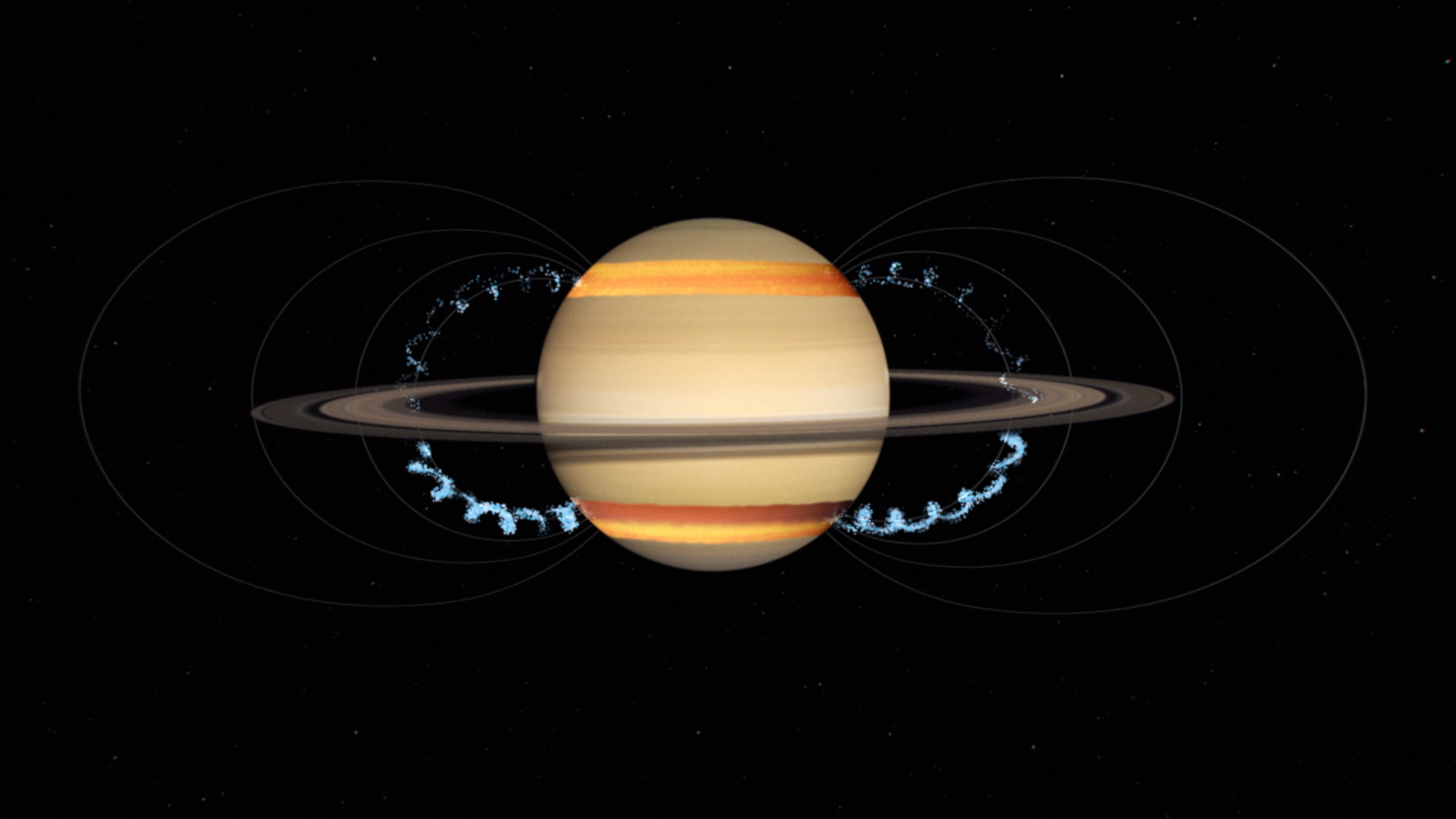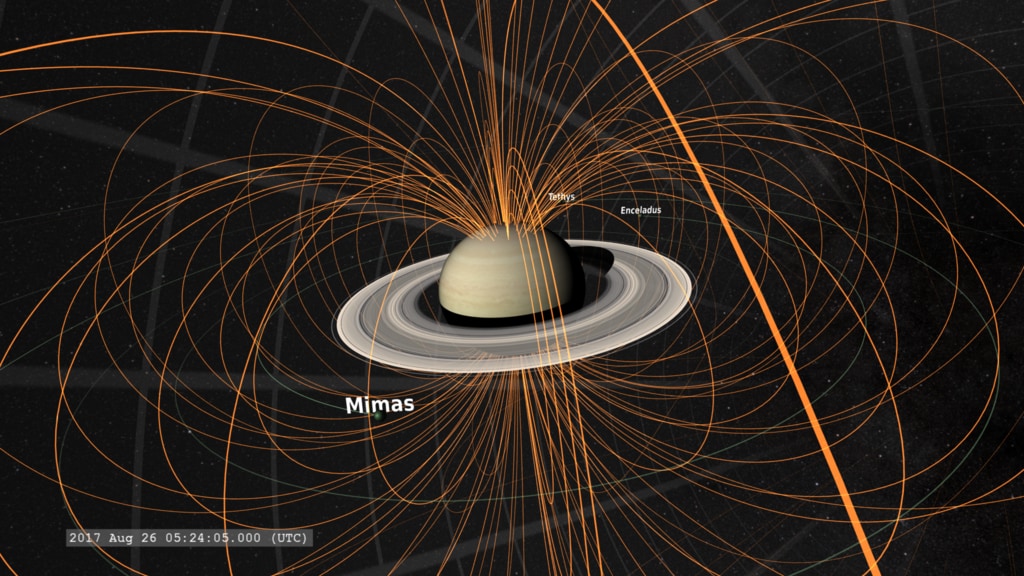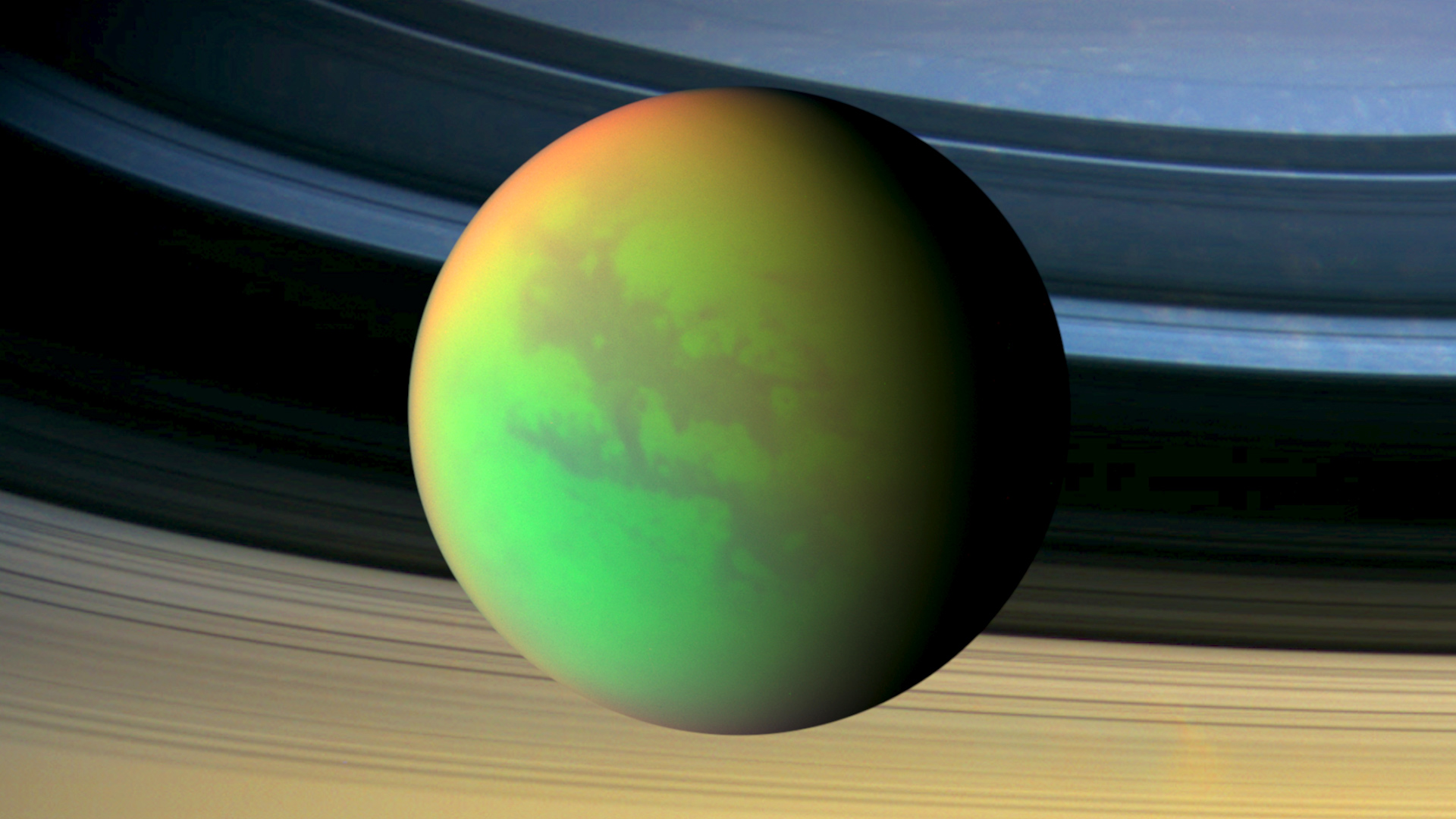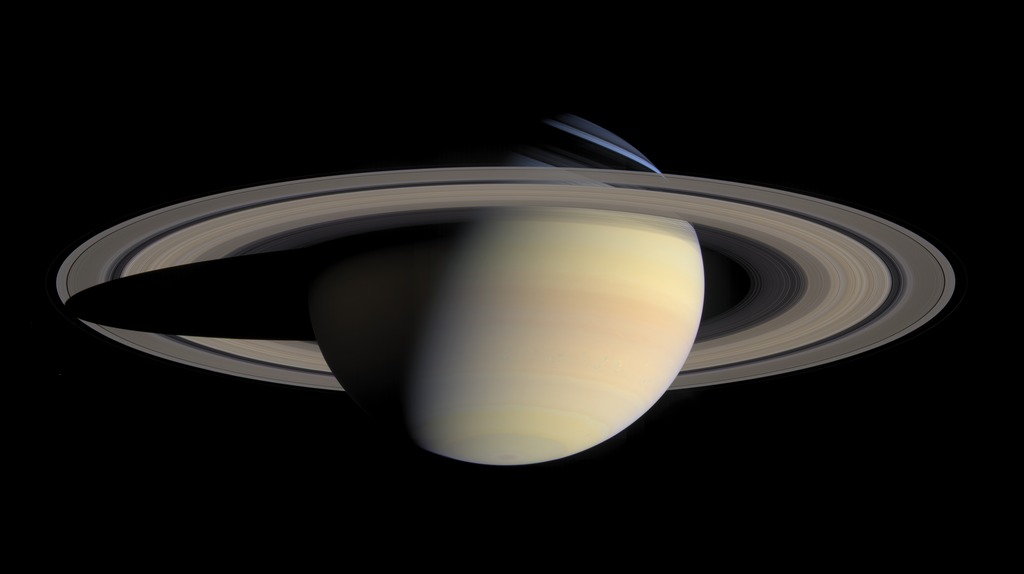Saturn Through the Veil of Enceladus – Artist’s Concept

Artist’s concept of Saturn and its icy moons Enceladus (foreground), Titan (large crescent at upper left), and Rhea (small crescent). Based on imagery from the Cassini spacecraft.
Saturn has long inspired astronomers, from Galileo’s first glimpse of its rings in 1610 to the last pictures taken by the Cassini spacecraft as it descended toward the planet’s atmosphere in 2017. But after four centuries of observing Saturn with telescopes, robotic flybys and orbiters, what might it look like to visit in person and witness the jewel of the solar system rising above one of its many natural satellites? Here we imagine the scene.
Gazing over the south pole of the small moon Enceladus, geysers burst forth from cracks in the ice, scattering sunlight and forming a luminous veil around Saturn. In the distance, the large moons Rhea (right) and Titan (left) make their rounds of the gas giant’s far side. These bodies were discovered in the 17th century by astronomers Giovanni Domenico Cassini and Christiaan Huygens – the namesakes of the Cassini-Huygens mission, which explored the Saturn system from 2004 to 2017. The wealth of data and imagery returned by Cassini-Huygens vastly improved our understanding of the ringed planet and paved the way for future exploration.
For More Information
See NASA.gov
Credits
Please give credit for this item to:
NASA's Goddard Space Flight Center
-
Artist
- Dan Gallagher (KBR Wyle Services, LLC)
-
Scientists
- Stephanie Getty (NASA/GSFC)
- Lynnae Quick (NASA/GSFC)
-
Support
- Andrea Jones
- Staci Tiedeken (ADNET Systems, Inc.)
Release date
This page was originally published on Thursday, May 19, 2022.
This page was last updated on Tuesday, October 10, 2023 at 11:53 PM EDT.



